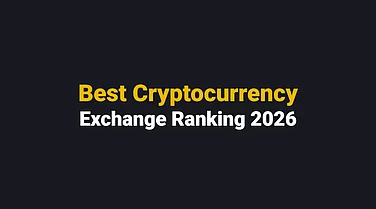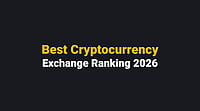The global financial system is going through one of its biggest transformations in decades. The dividing lines that once separated Traditional Finance and Decentralised Finance have become increasingly blurred, replacing two mutually exclusive ends with a new financial ecosystem: Hybrid Finance.
Hybrid Finance is more than a buzzword; it's a structural shift whereby the reliability and regulation typical of traditional finance meet the innovation and inclusivity typical of decentralized technology.
HyFi strives to bring both worlds together into a single system that is efficient, transparent, secure, and accessible by all participants, including the large institution down to the individual investor. The article examines how HyFi came into being, how it works, its benefits and challenges, and the future of this powerful amalgamation.
Understanding the Building Blocks: TradFi and DeFi
Traditional Finance (TradFi)
Traditional Finance, in short, is the conventional financial system consisting of banks, stock exchanges, insurance companies, and central banks regulated by the government.
It heavily relies on intermediaries and is regulated with tight legal and regulatory frameworks, where the focus remains on stability and consumer protection.
Key characteristics of TradFi include:
It requires centralized entities, such as banks or regulators, to validate and track all the transactions.
Compliance operations are heavy, involving Know Your Customer (KYC) and Anti-Money Laundering (AML)
High entry barriers due to fees, geography, and paperwork.
Limited access, especially in developing regions.
Strengths include stability and consumer protection, but much of this comes at the cost of speed and flexibility.
TradFi offers trust and predictability, but the process, mediated by many intermediaries, often leads to inefficiencies, delays, and limitations to financial inclusion.
DeFi
On the other side of this spectrum is DeFi, a blockchain-driven environment in which financial transactions can happen with no need for any middlemen. DeFi utilizes smart contracts, sets of self-executing programs on blockchains, for the automation of financial activities like lending, borrowing, trading, and staking.
Main characteristics of DeFi include:
Open to whomever has an internet connection and a digital wallet.
Different permissions and visibility of changes. This is due to the nature of the public blockchain, which is transparent.
24/7 availability and borderless financial interaction.
Lower operational costs due to fewer intermediaries.
Innovative mechanisms of yield farming, liquidity pools, and decentralized exchanges (DEXs).
However, DeFi also faces some challenges in the form of regulatory uncertainty, smart contract vulnerability, and a lack of consumer protection-all obstacles to mass institutional adoption.
The Divide Between TradFi and DeFi
TradFi and DeFi have operated in parallel worlds: one centralized and regulated, the other decentralized and open source. Whereas TradFi is focused on stability and trust, DeFi prizes freedom and innovation.
But as the financial ecosystem matures, stakeholders increasingly realize that both models have strengths worth merging.
TradFi offers compliance, consumer protection, and a regulatory structure.
DeFi offers automation, speed, and inclusivity.
It is at the juncture of these models that Hybrid Finance, or HyFi, has been born: an ecosystem designed to integrate the best of both.
What is Hybrid Finance?
Defining HyFi
HyFi is a blend of both TradFi and DeFi in creating one single financial infrastructure. It represents not only the stability, trust, and compliance associated with traditional banking but also the innovative spirit, automation, and inclusiveness of decentralized technology.
Simplistically, HyFi represents a means of bringing blockchain into the regulated world of finance without losing either of the safeguards of compliance or the efficiency of smart contracts.
This would let banks, fintechs, and DeFi protocols share platforms to allow users to access traditional assets such as bonds, mutual funds, and currencies, as well as digital assets, such as crypto tokens or NFTs, from one integrated financial layer.
Why Hybrid Finance is on the Rise
Some of the driving factors observed in HyFi's rise to prominence include:
Institutional Adoption of Blockchain: Traditional institutions are now testing tokenized assets, blockchain settlement, and digital currencies.
Regulatory Clarity: Newer frameworks, such as the MiCA in Europe and legislation related to stablecoins in a number of countries, set the stage for compliant blockchain operations.
Demand for Tokenised RWAs: Investors are looking for liquidity and access to blockchain-based assets pegged to real-world value.
Convergence: APIs, DLTs, and custodial integrations are bridging the gap between traditional systems and decentralized networks.
Global Push for Financial Inclusion: HyFi opens its doors to those excluded by the legacy systems through reduced fees and lower participation barriers.
Hybrid Finance is neither a replacement for TradFi nor DeFi but an evolution of both.
The Core Components of Hybrid Finance
Success of HyFi is based on several foundational elements that allow integration between traditional and decentralized ecosystems:
Tokenisation: Traditional assets, such as bonds, equities, or real estate, can be made into blockchain-based tokens for the sake of fractional ownership.
Smart Contracts: Automating financial operations, such as settlement or interest payments, through secure code rather than intermediaries.
Hybrid Custody: The balance between institutional-grade custody solutions and blockchain wallets for greater control and compliance.
Interoperable Infrastructure: APIs, blockchain bridges, and middleware for connecting banks, payment systems, and DeFi protocols.
Regulatory Compliance Layers: Integration of KYC, AML, and other identity frameworks so that doing business on DeFi is legal.
TradFi vs DeFi vs HyFi: A Comparison
Feature | TradFi | DeFi | Hybrid Finance (HyFi) |
Control | Centralised (banks/regulators) | Decentralised (smart contracts) | Shared — regulated decentralisation |
Accessibility | Limited region-specific | Global and permissionless | Open access with regulatory safeguards |
Regulation | Highly regulated | Partially regulated or unregulated | Compliant yet flexible |
Settlement Speed | Days (T+2 or longer) | Instant on-chain | Near real-time compliant processing |
Asset Type | Stocks bonds fiat currencies | Crypto tokens NFTs stablecoins | Tokenised real-world and digital assets |
Risk Level | Low but less transparent | High and volatile | Balanced risk through oversight |
Practical Applications of Hybrid Finance
Tokenised Real-World Assets (RWAs)
One of the most promising use cases of HyFi is the tokenisation of traditional assets such as real estate, commodities, and government bonds. By converting these assets into digital tokens, they can be traded on blockchain-based marketplaces, offering:
Fractional ownership, enabling smaller investors to participate.
24/7 trading and liquidity.
Transparent ownership records.
Hybrid Settlement Networks
HyFi enables near-instant atomic settlements where transactions are executed and settled simultaneously on blockchain, removing counterparty risks. Financial institutions benefit from efficiency while regulators maintain visibility.
Cross-Border Payments and Remittances
Traditional cross-border payments are slow and expensive. HyFi platforms integrate blockchain rails with regulated bank infrastructure, enabling faster, cheaper, and traceable global transactions.
Institutional DeFi Participation
HyFi allows banks and asset managers to participate in DeFi ecosystems while maintaining compliance through permissioned smart contracts. This gives institutions access to DeFi liquidity pools and yield-generating products with proper safeguards.
Hybrid Exchanges and Custody Solutions
Hybrid exchanges combine the reliability of regulated custodians with DeFi functionalities such as automated trading, reducing risk while improving accessibility.
Benefits of Hybrid Finance
The potential advantages of HyFi are vast and transformative:
Efficiency: Reduced transaction times, fewer intermediaries, and lower operational costs.
Accessibility: Broader participation through tokenisation and open infrastructure.
Transparency: Blockchain’s immutable ledger enhances trust and auditability.
Security: Regulated frameworks and institutional-grade custody reduce fraud risk.
Innovation with Stability: Institutions can innovate without losing compliance or consumer protection.
Continuous Markets: Financial markets become 24/7 instead of traditional trading hours.
HyFi aims to bring the best of both systems — speed and safety, innovation and integrity.
Challenges and Risks of Hybrid Finance
Despite its promise, HyFi is still in its early stages and faces several challenges:
Regulatory Ambiguity: Different countries have varying rules regarding crypto assets and tokenisation.
Cybersecurity Threats: Smart contract vulnerabilities can lead to major financial losses.
Interoperability Barriers: Legacy banking systems are difficult to connect with blockchain technology.
User Trust and Education: Public understanding of HyFi remains limited; trust-building is essential.
Systemic Risk: The interconnection between DeFi and TradFi can amplify financial contagion if not managed carefully.
Integration Costs: For many institutions, transitioning to hybrid systems requires heavy investment in infrastructure and compliance systems.
These risks underline the importance of standardisation, strong governance, and regulatory cooperation.
How Financial Institutions Can Adopt HyFi
The transition to Hybrid Finance requires structured planning and execution. Here’s a practical roadmap:
Define Objectives: Identify the financial processes that can benefit from blockchain integration.
Assess Infrastructure: Evaluate legacy systems for compatibility with blockchain technology.
Select Hybrid Frameworks: Choose regulated blockchain platforms and custody solutions.
Develop Smart Contracts: Automate settlements, compliance, and auditing through secure code.
Implement Regulatory Compliance: Integrate KYC/AML into on-chain operations.
Ensure Security Audits: Conduct regular reviews of smart contracts and network vulnerabilities.
Pilot Programs: Start small — for example, tokenise a single fund or bond.
Scale and Optimise: Expand based on pilot success while ensuring full compliance and governance.
The Future of Hybrid Finance
Hybrid Finance represents more than a trend — it’s a paradigm shift that could reshape global finance over the next decade.
Emerging Trends
Rapid tokenisation of bonds, funds, and real estate.
Integration of Central Bank Digital Currencies (CBDCs) into hybrid systems.
Growth of regulatory-compliant DeFi for institutions.
Increasing collaboration between fintech startups and banks.
Advanced AI and analytics used for risk detection and smart contract automation.
The Global Outlook
According to financial analysts, tokenised assets could reach trillions in value as institutions adopt HyFi models. Emerging markets like India, Brazil, and Southeast Asia are particularly well-positioned to benefit due to their digital-first economies and growing fintech sectors.
Implications for India and Emerging Economies
For countries like India, HyFi can:
Enhance financial inclusion by offering affordable, digital asset access.
Simplify cross-border remittances for the large diaspora population.
Enable tokenised lending for small businesses.
Encourage transparent public funding through blockchain traceability.
Conclusion
The emergence of Hybrid Finance (HyFi) marks the beginning of a new era — an era where tradition meets technology.
By blending the safety and structure of Traditional Finance with the innovation and transparency of Decentralised Finance, HyFi paves the way for a financial ecosystem that is smarter, faster, and more inclusive.
While challenges around regulation, security, and adoption remain, the direction is clear — the future of finance lies in collaboration, not competition. HyFi isn’t replacing TradFi or DeFi; it’s evolving them into something greater: a unified, transparent, and universally accessible financial landscape.
As markets, institutions, and users continue to adapt, Hybrid Finance may well become the foundation of global finance in the digital age.
FAQs About Hybrid Finance
Q1. What does Hybrid Finance (HyFi) mean?
It refers to a financial model that integrates traditional finance with decentralised finance, combining regulatory safety with blockchain innovation.
Q2. How is HyFi different from DeFi?
DeFi is fully decentralised and often unregulated. HyFi introduces regulatory oversight, compliance, and institutional participation while keeping blockchain efficiency.
Q3. What are tokenised real-world assets?
These are physical or traditional financial assets represented as digital tokens on a blockchain, enabling fractional ownership and global trade.
Q4. Can banks adopt HyFi?
Yes. Many banks are experimenting with blockchain-based settlements, tokenised funds, and digital asset custody as part of a hybrid model.
Q5. What are the main risks of HyFi?
The major risks include smart contract vulnerabilities, regulatory uncertainty, and system integration challenges.
Q6. Why is HyFi important for the future of finance?
It provides a balanced approach — ensuring compliance and security while unlocking blockchain’s efficiency and inclusivity.

























